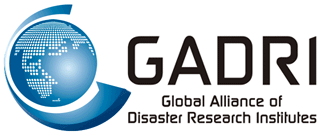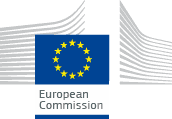- Home
- About
- Events
- Members
- About Members
- Member Institutes
- Algeria
- Argentina
- Australia
- Austria
- Bangladesh
- Brazil
- Bulgaria
- Canada
- China, People's Republic of
- Colombia
- Ecuador
- Egypt
- European Commission
- France
- Germany
- Ghana
- Hong Kong (People's Republic of China)
- India
- Indonesia
- Iran (Islamic Republic of)
- Israel
- Italy
- Japan
- Korea, Republic of
- Lao PDR
- Malaysia
- Mexico
- Morocco
- Nepal
- New Zealand
- Oman
- Phillippines
- Slovakia
- South Africa
- Sri Lanka
- Sudan
- Sweden
- Switzerland
- Chinese Taipei
- Thailand
- Turkey
- United Kingdom
- United States
- Vietnam
- Zimbabwe
- Membership
- Activities
- Resources
- GADRI Archives
 |
United Nations University
|
| Outline The world is in the midst of a global water crisis - where lack of adequate freshwater supplies and poor management threaten the health of both humans and ecosystems. Each year, two million people are killed due to diseases caused by poor water quality and inadequate sanitation, and the health of millions more is harmed. Coastal oceans provide some 20% of the animal protein in the human diet, but are in a perilous state due to climate change and local degradation. These water problems will continue growing as world population climbs and climate change alters global water distribution patterns. A critical factor contributing to the water crisis is the lack of indigenous capacity - educational, managerial, technological and institutional - for effective water management in many developing countries. UNU-INWEH acts as the "UN Think Tank on Water" and contributes to the resolution of the global water challenge through a unique programme of applied research and education. It conceives, develops, and manages water initiatives that help developing countries build their capacity for lasting improvements in human and ecosystem health, and overall reduction in poverty. The United Nations University is not a traditional university in the sense of having a faculty, campus, or students. We respond directly to the regional and global water crisis and facilitate efforts to meet UN Development goals by providing a scientific evidence base. UNU-INWEH carries out its work in cooperation with other research institutions, international organizations, individual scholars, and scientists throughout the world. |
|
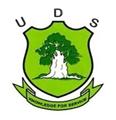 |
University for Development Studies (UDS)Tamale |
| Outline
UDS is promoting equitable socio-economic transformation of communities through
Students in local communities, do Needs Assessments and write an Intervention Proposal intended to solve problems identified in their selected communities. This orientation is important for research oriented towards education and assistance to the rural communities in need of disaster education. UDS has taken part in CECAR Africa project dealing in disaster management and resilience building as pilot for the entire Africa and made major impact in communities where project was implemented. We are yet to expand activities of the project to other parts of Ghana and Africa. We also need to link with relevant organizations both in Ghana as well as outside country. In this respect, GADRI Membership will be of immense help and support to UDS and its activities in collection disaster information, education and mitigation. [detail] --> |
|
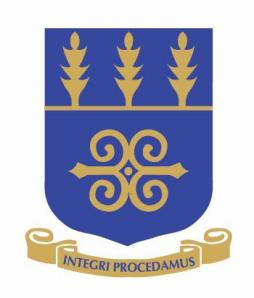 |
Department of Geography and Resource Development
|
| Outline The Disaster Risk Reduction Programme started as part of the Periperi U which is a partnership of African universities that spans across the continent and is committed to building local disaster risk related capacity. Established in 2006, with five original members, the partnership has grown to include eleven universities from Algiers to Antanarivo, with institutions in Algeria, Ethiopia, Ghana, Kenya, Madagascar, Mozambique, Nigeria, Senegal, South Africa, Tanzania and Uganda. The goal of Periperi U is to reduce disaster risks in among African countries through improved national and local disaster risk management, due to enhanced strategic human capacity to integrate risk reduction into critical developmental sectors and programmes. The partners of Periperi U believe this can accomplished through building and embedding sustainable 'multi-tasking' capabilities in disaster risk and vulnerability reduction capacity building in ten selected institutions of higher learning in Africa consistent with global disaster reduction priorities reflected in the Hyogo Framework of Action. Since 2006 to 2015, an average of three MPhil students are produced by the programme. Like most newly established programmes/centres, the major challenge has been finance needed to procure the necessary logistics and facilitate research in general.[detail] --> |
|
 |
Hong Kong Jockey Club Disaster Preparedness and Response Institute (HKJCDPRI)
|
| Outline The Hong Kong Jockey Club Disaster Preparedness and Response Institute (HKJCDPRI) was established in 2014 as a regional and international leader in disaster preparedness and response training, and to promote community resilience in Hong Kong. With funding support from the Hong Kong Jockey Club Charities Trust, HKJCDPRI is based at and led by the Hong Kong Academy of Medicine with a view to fostering Hong Kong as a prepared community to respond to disasters to reduce loss and suffering. We provide services in the following areas: Professional Development; E-Learning; Research & Policy Studies; and Community Engagement. The Hong Kong Jockey Club Disaster Preparedness and Response Institute (HKJCDPRI) and our working partners collaborate in conducting disaster preparedness related research and initiating policy discussion. Research and policy brief papers have been produced for multi-sectoral stakeholders to discuss global issues of disaster risk reduction, local and regional preparedness, community resilience, and also to develop, implement and evaluate related policies. Research studies and policy briefs published by the HKJCDPRI and its working partners have been disseminated through HKJCDPRI's network via various platforms to reach our target audiences. These findings facilitate development of sophisticated approaches of and generate innovative ideas for better disaster management. We work with research institutes and practitioners to conduct research to identify good practices and document lessons from disaster management operations. We share the valuable findings with the community and disaster management practitioners to develop better disaster preparedness solutions in future. Our researches range from field studies and survey research on groups, organizational and community preparations for response to, and recovery from natural and technological disasters. We believe that looking into real-life cases would generate important lessons and practical recommendations for the community. We also work with research institutes and disaster management practitioners to produce policy brief papers for multi-sectoral stakeholders to discuss global issues of disaster risk reduction, local and regional preparedness, and community resilience. From time to time, we organise policy discussion seminars to encourage idea exchanges among policy workers and disaster management practitioners. [detail] --> |
|
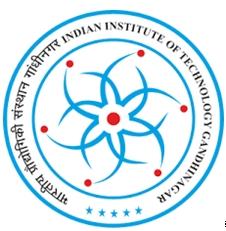 |
Indian Institute of Technology GandhinagarGujarat |
| Outline The Indian Institute of Technology Gandhinagar strives to offer the best undergraduate and graduate education in India with unmatched innovations in curriculum. The institute promotes critical thinking and an appreciation of the interdisciplinary character of knowledge, with an emphasis on the liberal arts, project oriented learning, compulsory courses in design and the life sciences, diversity and globalization. The five-week immersion Foundation Programme for all new undergraduate students was recognized with the World Education Award 2013 by the World Education Summit for innovations in engineering education. Nearly a quarter of its undergraduate students receive study abroad experience during their academic career. IIT Gandhinagar is committed to promoting excellence in science, technology, as well as the humanities and social sciences and to the development of rounded and nuanced minds. IIT Gandhinagar was founded in 2008 and is located in Palaj, Gandhinagar, Gujarat on the banks of river Sabarmati. Gandhinagar is in proximity to Ahmedabad which is one of the oldest living cities in India, known both for a rich cultural past as well as state-of-the-art infrastructure, thriving industries, and many modern amenities. The city is also the hub of prestigious academic and research institutes, such as the Indian Institute of Management, Ahmedabad, and the National Institute of Design. Gujarat's long standing mercantile and business tradition encourages excellence and entrepreneurship. IIT Gandhinagar offers BTech and MTech programmes in Chemical, Civil, Electrical, Mechanical and Materials Science and Engineering and also offers MSc programmes in Mathematics, Physics, Chemistry and Cognitive Science. It also offers MA programme in Society and Culture. Ph.D. programmes are offered in all the engineering and science disciplines such as Chemical, Biomedical, Civil, Electrical, Mechanical, Computer Science and Materials Science and Engineering, Chemistry, Physics, Mathematics, Earth Science, and Cognitive Sciences. Apart from the graduate programmes in engineering and science, institute also offers PhD in Literature, Philosophy, Psychology, Sociology, political sciences and Social Epidemiology. Safety Centre is one of the prominent centres at IIT Gandhinagar. The objective of the IIT Gandhinagar Safety Centre is to promote safety in public and private spheres, industry and the informal sector. The Safety Centre advances these objectives with activities to Discover (Research and Development), Teach (Offering safety courses in UG and graduate curriculum), Outreach (through Conferences, Workshops, Seminars, Symposia and training Professionals from Academia and Industry) and Practice. [detail] --> |
|
 |
Center of Excellence in Disaster Mitigation & Management
|
|
Outline The centre is a multidisciplinary research and education centre. The main aim of the educational program is to impart advanced knowledge on technical and managerial skills to the professionals to make them equipped with innovative technologies for effective mitigation and management of disasters for the overall benefit of the society. [detail] --> |
|
 |
Jindal School of Liberal Arts and Humanities
|
|
Outline Pedagogy becomes crucial because it is the act of teaching that is the eventual educational act, a drama unfolding everyday around a canonical text, an invitation to re-reading, as an unfolding invention. These attributes and approach make JSLH one of the best colleges for humanities. There is also the dream of democracy. Liberal arts and humanities provide the syllabus for a democratic way of life. It is here that cosmos, a community, a constitution and a syllabus can all integrate into a four-fold way of life we can call democratic. The ideas of a cosmos invokes world views anchored in religions and civilizations, creating a relation between man, nature and god, creating a multiverse of meanings, where old dichotomies between politics and religions, science and religion are re-explored. A cosmos needs a community or a neighborhood of communities to embed it and embrace it. A community needs a history, a story teller and an ethics of memory which becomes the basis of an ethics of caring. Liberal arts and humanities is fundamentally about responsibility, leadership and judgment, the creativity of standing up for something. [detail] --> |
|
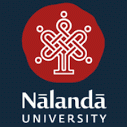 |
School of Ecology and Environment Studies (SEES)
|
|
Outline Rooted in the tradition of the ancient Nalanda University, the School aspires to generate critical understanding that will benefit the globe. The School also seeks to bridge the current gap in the study of environmental issues between the Western and the Eastern perspectives. It addresses pressing local, regional and global environmental problems of our times through education, research, collaborations, and policy recommendations. [detail] --> |
|
 |
Brawijaya UniversityEast Java |
|
Outline This date was later promulgated as UB's anniversary (specifically called Dies Natalies among Indonesian academic society members). Previously, Universitas Brawijaya was publicly known with acronym of UNBRA and then UNIBRAW. On Universitas Brawijaya Senate meeting on March 17, 2008, UB was inaugurated as the official acronym of Universitas Brawijaya. The Hymn of UB was composed by a student of the Faculty of Veterinary and Animal Husbandry called Yanardhana in 1963, while the Mars of UB was composed by Lilik Sugiarto in 1996. Both songs are still frequently sung up to this day. UB campus is situated in the city of Malang, East Java, in a strategic location can easily be reached by public transportations. With trees growing in all corners of the campus and the cool air of Malang, UB indeed is a very fresh campus. As a city of education, Malang has been developing rapidly. This seems to be inseparable from the glory of East Java in the past. [detail] --> |
|
 |
Faculty of Engineering
|
| Outline Gadjah Mada University (UGM) is an Indonesian public research university located in Yogyakarta, Indonesia, founded on December 19, 1949. UGM is the oldest and largest institution of higher learning in Indonesia. Gadjah Mada has been considered to be one of the most prestigious universities in Indonesia, comprises of 18 faculties, 68 undergraduate study programs, 23 diploma study programs, 104 master and specialist study program, and 43 Doctorate study programs. It has approximately 55,000 students, 1,187 foreign students and 2,500 faculty members currently. The vision of UGM is to be an excellent and innovative world Class Research University, imbued with nation's cultural values based on Pancasila as the state ideology and dedicated to the nation's interest and humanity. The Mission is to carry out education, research and community service as well as preservation and development of knowledge that is excellent and useful for society. UGM is creating conducive environment for the continuity of the learning process. These efforts are pursued in the context of developing multidisciplinary collaborations and responding to ecological and environmental issues in order to achieve the vision of the university. Some of the steps are promoting action research in disaster mitigation and implementing socio-preneurial and technical approach for disaster risk reduction. Our wide range of collaboration experiences with similar education institutions, research institutes, government agencies, NGOs and industry has enabled UGM to facilitate intensive collaborations in promoting the disaster risk reduction effort in Indonesia. [detail] --> |
|
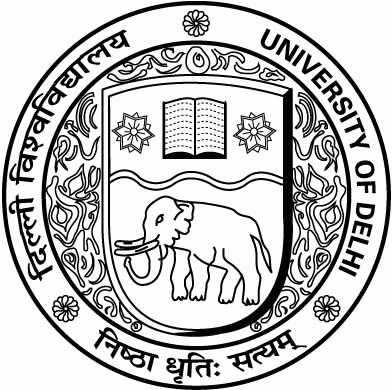 |
Department of Geography, Delhi School of Economics
|
| Outline The department traces its origin to October 1959, when under the initiative of Professor V.K.R.V. Rao, the then Vice-Chancellor of the University and an eminent Economist, a Department of Human Geography was established as a constituent of the Delhi School of Economics. Professor George Kuriyan, a renowned Geographer of India at that time, was the first Professor and founder of the department. In 1966, Professor V.L.S. Prakasa Rao took over from him and guided the department until 1973. Since then, the department acquired a name and a distinctive identity in India and abroad. It draws students from all over India as well as abroad. The department has expanded many times over since 1973. The name of the department was changed to the Department of Geography in 1976 to indicate the widening scope of teaching and research activity in physical and human aspects of Geography. The Department has evolved many new courses, which have been widely acclaimed as the frontiers in Geography. The Faculty members undertake research projects from various agencies including University Grants Commission, Indian Council of Social Science Research, Council for Scientific and Industrial Research, Indo-Canadian Shastri Institute and Ministries of Government of India, which include Indian Space Research Organization, Department of Science and Technology and the Planning Commission.
Engage with national and international Geography Associations occupying post of Vice-President, IGU and Secretary General, NAGI. [detail] --> |
|
 |
Geological Agency (GA), Ministry of Energy and Mineral Resources of the Republic of IndonesiaBandung |
| Outline The Geological Agency (GA) was initially formed during the Dutch colonialism era in the 18th century and was called as Kantoor van het Mijnwezen. In 1850, the name was transformed into Dienst van het Mijnwezen. In 2005, it was finally called as the Geological Agency under the Ministry of Energy and Mineral Resources (MEMR) of the Republic of Indonesia. Based on the decree of MEMR dated 18 November 2010, the Geological Agency (Echelon-I) consists of five Centers (Echelon-II), namely the Secretariat of Geological Agency (SGA), the Center for Geological Resources (CGR), the Center for Volcanology and Geological Hazard Mitigation (CVGHM), the Center for Groundwater Resource and Environmental Geology (CGREG), and the Center for Geological Survey (CGS). The CVGHM was established to conduct research, investigation, engineering recommendations, and services in the field of volcanology and geological hazard mitigation. In performing its duties, the CVGHM performs several functions including (a) the preparation of technical policy development, norms, standards, procedures, and criteria, as well as plans and programs in the field of volcanology and geological disaster mitigation; (b) the implementation of research, investigation, engineering, thematic mapping and analysis of geological disaster risk, as well as early warning of volcanic activity and potential of ground movement and the provision of technical recommendations on geological disaster mitigation; (c) coaching functional of volcano watchers or observers; (d) monitoring, evaluating and reporting the implementation of research, investigation, engineering, thematic mapping and geological disaster risk analysis, as well as early warning of the volcanic activity and the potential ground movement and the provision of technical recommendations geological disaster mitigation; and (e) the administration. The organization structure of the CVGHM consists of four sections, which are: (a) Section of Volcano Monitoring and Investigations (observing 67 active volcanoes by 70 volcano observatories, estimate and publish the states or level of volcanic activity, providing technical recommendations within each states of volcanic activity, publishing disaster-prone area maps, topographic maps , geological map, and providing counseling. [detail] --> |
|
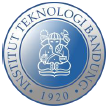 |
Research Center for Disaster Mitigation, Institut Teknologi Bandung (ITB)Bandung |
| Outline Research Center for Disaster Mitigation, under the coordination of Institute for Research and Community Service - Institute of Technology Bandung, was established since 2003 with the name of Research Group on Disaster Mitigation and then changed into Center for Disaster Mitigation (in 2005) before its current name. The change of name in 2011 brought wider authority and responsibility. The missions of RCDM ITB now are to enhance fundamental and applied research activities, which are able to anticipate, respond to and mitigate the disaster risk; to promote fundamental and applied research results that can strengthen the policy development in disaster management in order to achieve sustainable development; and to support the formation of disaster mitigation expert-communities in Indonesia through education. Research Area: RCDM ITB is a multidiscipline area. Many experts from many expertise, such as seismology, active tectonic, tsunami, infrastructure, geodesy, geology, volcanology, disaster management, regional policy, technology failures, and disaster instrument, which is represented by board of researcher. Besides, the center is also supported by Advisory Board, which consisting of respected head of several institutions related with disaster mitigation. As part of university, the research implemented by RCDMP ITB are focused in three main tasks, i.e. education, research and community services through community-based disaster mitigation activities to increase the awareness of community. [detail] --> |
|
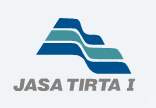 |
Jasa Tirta I Public Corporation (PJT I)Malang |
| Outline Jasa Tirta Public Corporation was established as a state-owned company with a specified concensus in rendering water services and performing O&M activities based on water service fee abstracted from the users. The corporation was established under the Government Regulation No. 5 of 1990. To adapt further to the responsibilites and assignments, the regulating basis of Jasa Tirta I Public Corporation (PJT I) was twice ammended. Firstly, in 1999, by the Government Regulation No. 93 of 1999, in order to strengthen the organization and permit its jurisdiction to extend to other basins; and recently by the Government Regulation No. 46 of 2010. The objective and goal of PJT I is take part and support the Government policy and program on economic sector and national development in general, and particularly on business of water resources and its management, as well as optimization of PJT I's resources to produce goods and services based on healthy corporation management principles. In order to achieve the objective and goal, PJT I conducts main business activities: (1) services to provide bulk water for drinking water, industry, agriculture, flushing, port, electric power generation and others; (2) provide water power to generate electricity for the State Electricity Company; (3) generate and distribute electric power and drinking water, perform consulting in water resources fields, heavy equipment rental and water quality laboratory services, and (4) develop other water-related services including piped domestic supply at specified scales. PJT I in-charged in managing the water resources in 40 rivers (including the Brantas River) of the Brantas River Basin and to operate, maintaining, and managing the major infrastructure in these rivers. In 2000, the corporation was authorized to undertake water resources management activities within 25 rivers of the Bengawan Solo River Basin (an inter-provincial river basin lying in Central and East Java Provinces). In 2014 the corporation was authorized to undertake water resources management activities including controlling of water destructive forces, in Serayu Bogowonto and Jratunseluna River Basins in Central Java and Toba Asahan River Basin in North Sumatera. [detail] --> |
|
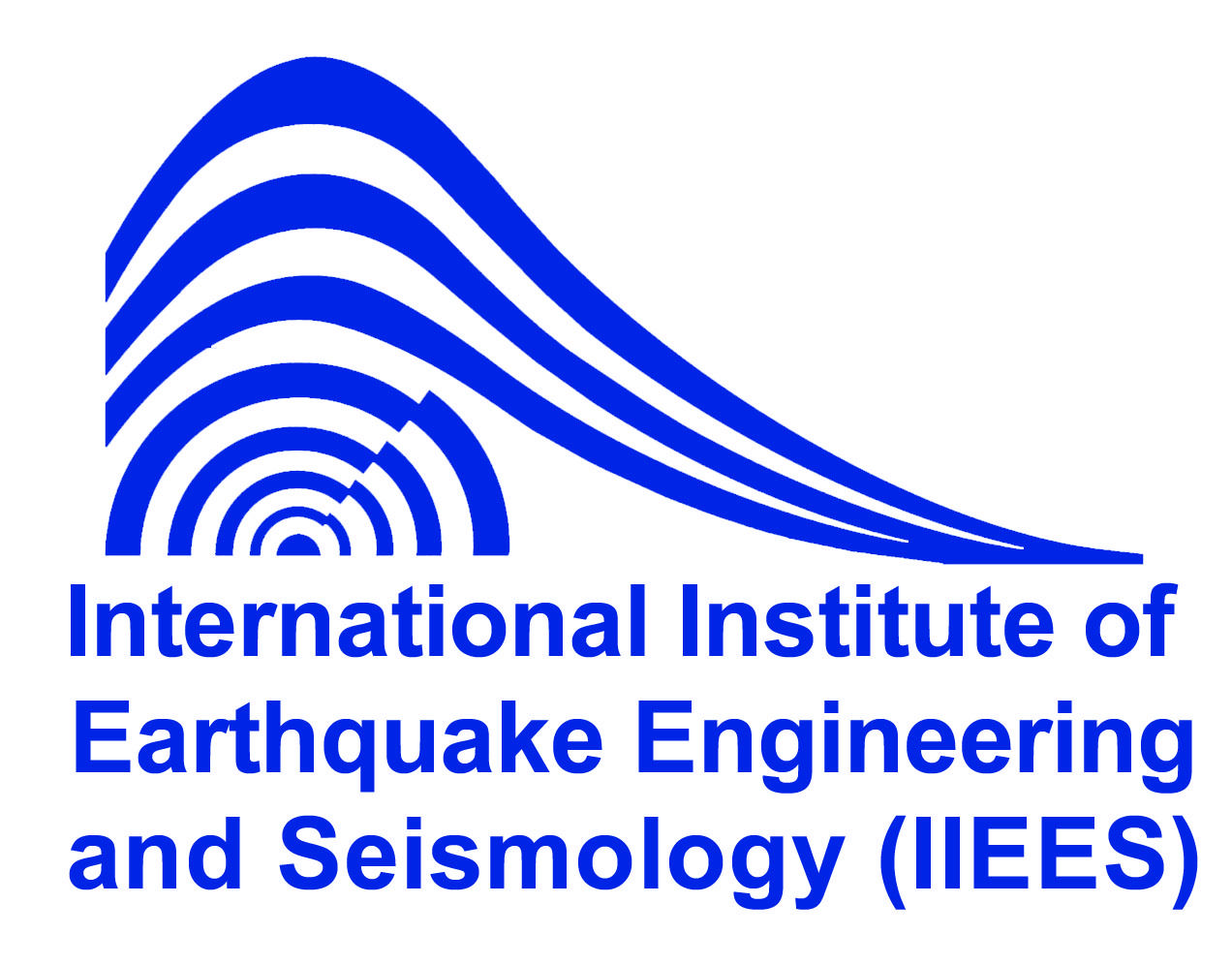 |
International Institute of Earthquake Engineering and Seismology (IIEES)Tehran |
| Outline Iran, being located between two Arabian and Euro-Asian tectonic plates, has experienced several destructive earthquakes, leaving heavy causalities and serious deterioration in different periods of its history. Over 130 severe earthquakes happened in the 20th century in this country, leaving socio-economic losses and long-lasting effects, indicate the seismicity and vulnerability of this country. Unfortunately, during some of these disastrous natural events even the invaluable evidences of ancient Persian culture have been flattened to the ground. All the aforementioned facts confirm the crucial necessity of being concerned about seeking a remedy in order to prevent and diminish these effects. Regarding high seismicity, vulnerability and high seismic risk of this region, International Institute of Seismology and Earthquake Engineering (IIEES) was established in November 1989 following the suggestion of 24th UNESCO General Conference and approval of Iranian government "Council of Higher Education Development" based on the investment of Iranian experts in the earthquake engineering. IIEES is composed of different research departments, including Seismology, Geotechnical Engineering, Structural Engineering, Risk Management, Graduate Studies, Information Technology, and International Relations. [detail] --> |
|
 |
National Knowledge and Research Center for Emergency Readiness, University of HaifaHaifa |
| Outline The National Knowledge and Research Center for Emergency Readiness with eighty-five researchers, was established in January 2018 by the Israel Ministry of Science and Technology and the National Emergency Management Authority (NEMA) of the Ministry of Defense. Core institutions involved are University of Haifa, the Technion and the Hebrew University, together with researchers from Rafael Advanced Defense Systems, Rambam Hospital, Tel Hai College, and the Israel School for Humanitarian Aid; the municipality of Haifa and NATAN International Humanitarian Aid. The Center's mission is to provide a state-of-the-art scientific research institute to serve as a think-tank for policy framers, decision-makers, the academic community and practitioners from all sectors. The two intertwined functions of the Center are 1) independently generated, cutting-edge and multi-disciplinary research, and 2) solicited real-time response to requests by NEMA, government ministries, elected officials, NGOs and other stakeholders. The current activity is a research gap assessment in the eight disciplinary groups (Social Science; Public Health and Emergency Medicine; Welfare and Social Work; Engineering, Technology, and Planning; Risk Assessment and Management; Environment; Law; and Public Policy) which culminates in September with a prioritized research agenda whose emphasis will be multi(trans)-disciplinary in nature. According to the prioritization, research projects will be funded beginning in November 2018. Some of the projects will be of a comparative nature and be conducted together with international partners. [detail] --> |
|
 |
Global Earthquake Model (GEM) FoundationPavia |
| Outline The GEM Foundation is a non-profit, public-private partnership that drives a global collaborative effort to develop scientific and high-quality resources for transparent assessment of earthquake risk and to facilitate their application for risk management around the globe. Assisted by an initiative of the OECD's Global Science Forum, GEM was formed in 2009 as a non-profit foundation in Pavia, Italy, funded through a public-private sponsorship with the vision to create a world that is resilient to earthquakes. GEM's mission is to become one of the world's most complete sources of risk resources and a globally accepted standard for seismic risk assessment; and to ensure that its products are applied in earthquake risk management worldwide. [detail] --> |
|
|
|
European Commission, Joint Research CentreIspra VA |
| Outline As the Commission's in-house science service, the Joint Research Centre's mission is to provide EU policies with independent, evidence-based scientific and technical support throughout the whole policy cycle. Working in close cooperation with policy Directorates-General, the JRC addresses key societal challenges while stimulating innovation through developing new methods, tools and standards, and sharing its know-how with the Member States, the scientific community and international partners. As the Commission's in-house science service, the Joint Research Centre's mission is to provide EU policies with independent, evidence-based scientific and technical support throughout the whole policy cycle. Its work has a direct impact on the lives of citizens by contributing with its research outcomes to a healthy and safe environment, secure energy supplies, sustainable mobility and consumer health and safety. The JRC draws on over 50 years of scientific work experience and continually builds its expertise based on its seven scientific institutes, which host specialist laboratories and unique research facilities. They are located in Belgium (Brussels and Geel), Germany, Italy, the Netherlands and Spain. While most of our scientific work serves the policy Directorates-General of the European Commission, we address key societal challenges while stimulating innovation and developing new methods, tools and standards. We share know-how with the Member States, the scientific community and international partners. The JRC collaborates with over a thousand organisations worldwide whose scientists have access to many JRC facilities through various collaboration agreements. [detail] --> |
|
 |
Department of Earth Sciences (DST)
|
| Outline The Earth Sciences Department of the University of Firenze has been recently recognized as National Centre of Excellence for scientific research and international relationship in the Geosciences field. The department has 42 units of academic staff, 21 units of administrative staff and 130 non-permanent staff such as PhD students, assistant researchers. The Earth Sciences Department of the University of Firenze is, since 2004, the official Centre of Competence of the Italian Civil Protection for Remote Sensing and Geohazards (Directive of the Italian Prime Minister of 27 February 2004; Decree of the Head of the Italian National Civil Protection Department no. 252 of 25 January 2005). In 2008 it was entitled "World Centre of Excellence on Landslide Risk Reduction 2008-2011" by International Programme on Landslide (IPL). This recognition was confirmed in 2011 and in 2014 for the third consecutive time. The Geohazards research group, which is established at Earth Sciences Department of the University of Firenze it is one of the largest centres for scientific and technological services on geohazards in Italy, currently composed by 51 full-time employees (Figure 1). The group counts 4 professors, 3 researchers, 7 technicians, 19 post-doc fellows, 15 PhD students and 3 administratives. It is the biggest centre in Italy in the field of Geohazards and Engineering Geology. [detail] --> |
|
 |
Research Center for Potential Development of
|
| Outline The center was established in January 2006 as one of research centers attached to the Graduate School of Engineering and Resource Science to make our community safe and peace from natural disasters, and is composed of the following six research fields : 1) Earthquake disaster, 2) Tsunami disaster, 3) River disaster, 4) Slope disaster, 5) Volcanic disaster and 6) Information and plan for disaster prevention and mitigation. The center aims to promote fundamental and applied studies that contribute to prevention and mitigation of natural disasters, to study and support regional disaster prevention and mitigation, and to educate and spread the knowledge of natural disasters on the general public, the local government staff concerned, the company personnel concerned and so on through lecture meetings, forums, seminars, symposiums, etc. In order to perform these aims, the center actively promotes cooperative researches and projects with national and local governments, companies, local communities and so on. Postgraduate students may study in any of above fields towards the master's and doctor's degrees under the supervision of the center staff. |
|
